Books on consciousness
A list of books relating to the hard problem of consciousness. Regularly updated cos I keep finding new stuff all the time.
A list of books relating to the hard problem of consciousness. Regularly updated cos I keep finding new stuff all the time.
1980s
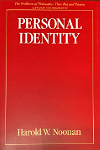 Harold W. Noonan
Harold W. Noonan
Personal Identity
(Routledge 1989)
In this useful and welcome study, Harold Noonan locates the problem of personal identity in the context of more general puzzles about identity and discusses the major historical theories and more recent debates. A comprehensive introduction to the nature of the self and its relation to the body. See Google (2nd edition 2003) | Google (3rd edition 2019)
 Mafizuddin Ahmed
Mafizuddin Ahmed
Bertrand Russell’s Neutral Monism
(Mittal 1989)
A study of Russell’s theory of neutral monism with special reference to logico-epistemological issues and his logical atomism. Two distinct phases are recognized: partial neutralism and complete neutral monism. The mind-body identity theory also arguably originates with Russell – its neutral monistic form is more plausible than its present-day physicalist form. See Mittal | Amazon | Google
 John R. Smythies & John Beloff (eds.)
John R. Smythies & John Beloff (eds.)
The Case for Dualism
(Univ. Virginia Press 1989)
An anthology of nine articles by philosophers and psychologists, one neuroscientist and one computer specialist. The editors make no claim of a concerted defence of dualism in this volume but the articles are intended to vindicate dualism from a variety of perspectives. Many old arguments are rephrased and a few new ones added. See Amazon | Google
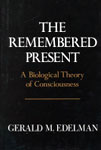 Gerald Edelman
Gerald Edelman
The Remembered Present: A Biological Theory of Consciousness
(Basic Books 1989)
Having laid the groundwork in his critically acclaimed books Neural Darwinism (1987) and Topobiology (1988), Edelman now proposes a comprehensive theory of consciousness. Integrating recent findings from the neurosciences with current knowledge of anatomy, cell biology, and psychology, Edelman constructs a detailed model of how we become aware of our own existence. See Amazon | Google Books
 Roger Penrose
Roger Penrose
The Emperor’s New Mind
(Oxford 1989)
For decades, proponents of artificial intelligence have argued that computers will soon be doing everything that a human mind can do. Admittedly, computers now play chess at the grandmaster level, but can a computer eventually do everything a human mind can do? In this absorbing and contentious book, Penrose argues that there are some facets of human thinking that can never be emulated by a machine. See Oxford | Google
 Charles Landesman
Charles Landesman
Color and Consciousness
(Temple U Press 1989)
Philosophers have debated whether colors are real qualities of bodies, dispositional properties, or mental entities caused by the impact of light upon the visual system. The author argues that none of these alternatives can be adequately defended and that they all assume that a correct theory of color must preserve, to some extent, our commonsense beliefs. Instead, Landesman defends a view called color skepticism, that nothing has any color, neither bodies nor appearances. See Temple | Google | Amazon
 W. D. Hart
W. D. Hart
The Engines of the Soul
(Cambridge 1988)
Argues for dualism, the view that mind and matter are distinct entities. Hart’s point of departure is the imaginative hypothesis of disembodiment, which establishes the possibility of the mind’s being a non-material thing. As for mind-body interaction, Hart contends that the issue is as much about the nature of causation as it is about the natures of mind and matter. See Cambridge | Google
 John A. Michon et al. (eds.)
John A. Michon et al. (eds.)
Guyau and the Idea of Time
(North Holland 1988)
This volume revives a most remarkable essay by the French philosopher Jean-Marie Guyau (1854-1888) on the genesis of our idea of time. The original text, written in Guyau’s widely acclaimed style, is accompanied here by its first translation into English, and by several chapters highlighting Guyau’s thought and contemporary significance. Central to his argument is his thesis that time is an acquired organisation of representations enabling humans to store and remember past events, a position remarkably consistent with modern cognitive views about knowledge representation and memory. See Amazon
 G. J. Whitrow
G. J. Whitrow
Time in History: Views of Time from Prehistory to the Present Day
(Oxford 1988)
A compelling, groundbreaking volume that traces the evolution of our awareness of time from the dawn of history to the present day. Whitrow examines not only the development of our methods of measuring time, but also how changing concepts of time have influenced history itself. Ranging from Ancient Egypt, Greece, Israel, the Islamic World, India, and China, to Europe and America, he presents an absorbing account of the different ways that various civilizations throughout history have perceived time. See Amazon | Google
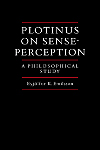 Eyjólfur Kjalar Emilsson
Eyjólfur Kjalar Emilsson
Plotinus on Sense-Perception
(Cambridge 1988)
A philosophical analysis of Plotinus’ views on sense-perception that aims to show how his thoughts were both original and a development of the ideas of his predecessors, in particular those of Plato, Aristotle and the Peripatetics. Special attention is paid to Plotinus’ dualism with respect to soul and body and its implications for his views on the senses. See Cambridge | Amazon | Google
 C. L. Hardin
C. L. Hardin
Color for Philosophers: Unweaving the Rainbow
(Hackett 1988)
Winner of the 1986 Johnsonian Prize in Philosophy, this expanded edition of C. L. Hardin’s ground-breaking work on color features a new chapter, “Further Thoughts: 1993,” in which the author revisits the dispute between color objectivists and subjectivists from the perspective of the ecology, genetics, and evolution of color vision, and brings to bear new data on individual variability in color perception. See Hackett | Google | Amazon
 Bernard J. Baars
Bernard J. Baars
A Cognitive Theory of Consciousness
(Cambridge 1988)
Baars suggests a way to specify empirical constraints on a theory of consciousness by contrasting well-established conscious phenomena (such as stimulus representations known to be attended, perceptual, and informative) with closely comparable unconscious ones (such as stimulus representations known to be preperceptual, unattended, or habituated). Adducing data to show that consciousness is associated with a kind of global workplace in the nervous system, Baars helps to clarify many difficult problems. See Google | Bruce Bridgeman review
 Yuasa Yasuo (trans. Nagatomo & Kasulis)
Yuasa Yasuo (trans. Nagatomo & Kasulis)
The Body: Toward an Eastern Mind-Body Theory
(SUNY 1987)
Yuasa suggests a reorientation in our conception of the body. Asian traditions, he reveals, do not sharply separate mind from body: while conceptually distinct from some perspectives, they are not meant to be ontologically distinct. Mind-body unity is also generally treated as an achievement rather than an essential relation. The book clears the ground for a provocative meeting between East and West. See SUNY | Amazon | Google
 C. Blakemore & S. Greenfield (eds.)
C. Blakemore & S. Greenfield (eds.)
Mindwaves: Thoughts on Intelligence, Identity and Consciousness
(Basil Blackwell 1987)
Are mindwaves just brainwaves or is there a ghost in the machine after all? The mind exerts a special fascination in our inquisitive and scientific age. Does it exist apart from the brain or is it just another way of talking about the actions of the brain itself? An important area of modern enquiry is opened up in this volume to reveal its cornerstones, controversies, and further directions. See Amazon
 Keith Seddon
Keith Seddon
Time: A Philosophical Treatment
(Croom Helm 1987)
“My objection throughout this discussion will be to object to thinking about time dynamically, and to show that the static view can withstand the objections from the transient and tensed theorists, and constitutes an adequate theory of time.” See Google
 Jerry A. Fodor
Jerry A. Fodor
Psychosemantics: The Problem of Meaning in the Philosophy of Mind
(MIT 1987)
This book explores the relation between commonsense psychological theories and problems that are central to semantics and the philosophy of language. Building on and extending Fodor's earlier work, it puts folk psychology on firm theoretical ground and rebuts externalist, holist, and naturalist threats to its position. See MIT | Amazon | Google
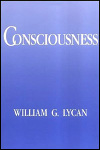 William G. Lycan
William G. Lycan
Consciousness
(MIT 1987)
Lycan defends an original theory of mind that he calls "homuncular functionalism." He argues that human beings are "functionally organized information-processing systems" who have no non-physical parts or properties, while recognizing the subjective phenomenal qualities of mental states and events, and an important sense in which mind is "over and above" mere chemical matter. See M.I.T. Press | Google | Amazon
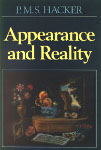 P. M. S. Hacker
P. M. S. Hacker
Appearance and Reality: A Philosophical Investigation Into Perception and Perceptual Qualities
(Blackwell 1987)
Hacker investigates the venerable claim that colours, tastes and sounds are mind-dependent or relative rather than objective characteristics of the world. The origins and development of this conception of appearance and reality are sketched. An analysis of sensation and perception follows, and the book concludes with an analytical account of the notions of the apparent and the real, and of the distinctions between appearances and perceptual experiences. See Amazon | Google
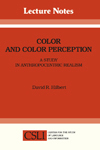 David Hilbert
David Hilbert
Color and Color Perception: A Study in Anthropocentric Realism
(CSLI 1987)
Color has often been supposed to be a subjective property, to be analyzed in terms of the phenomenological aspects of human experience. In contrast, an objectivist analysis of color takes color to be a property objects possess in themselves, independently of the character of human perceptual experience. David Hilbert defends a form of objectivism that identifies color with a physical property of surfaces – their spectral reflectance. See CSLI | Google | Amazon
 Bimal Krishna Matilal
Bimal Krishna Matilal
Perception: An Essay on Classical Indian Theories of Knowledge
(Oxford 1986)
A defence of a form of realism which stands closest to that upheld by the Nyāya school in classical India. Matilal presents the Nyāya view and critically examines it against that of its traditional opponent, the Buddhist version of phenomenalism and idealism. His reconstruction of Nyāya arguments meets not only traditional Buddhist objections but also those of modern sense-data representationalists. See Oxford | Amazon
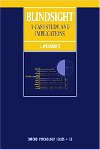 Lawrence Weiskrantz
Lawrence Weiskrantz
Blindsight: A Case Study and Implications
(Oxford 1986)
Damage to the neocortex is generally understood to result in blindness, but some patients with this form of blindness can nevertheless discriminate certain types of visual events within their “blind” field, though without being aware of this ability: they think they are only “guessing.” Weiskrantz gives an account of research over a number of years into a particular case of such “blindsight,” along with a discussion of the historical and neurological background. Note – there is an updated 2009 edition. See Amazon | Google
 Thomas Nagel
Thomas Nagel
The View from Nowhere
(Oxford 1986)
Humans have the unique ability to view the world in a detached way: we can think about it in terms that transcend our own experience or interest and consider it from a vantage point that is “nowhere in particular.” At the same time, each of us is a particular person in a particular place, each with his own “personal” view of the world, a view that we can recognize as just one aspect of the whole. How do we reconcile these two standpoints? Nagel’s ambitious and lively book tackles this fundamental issue, arguing that our divided nature is the root of a whole range of philosophical problems. See Oxford | Google | Amazon
 Bas C van Fraassen
Bas C van Fraassen
An Introduction to the Philosophy of Time and Space
(Columbia U Press 1985, 2nd edition)
This book is based primarily on an undergraduate philosophy course on time and space at Yale University from 1966 to 1968. Originally published in 1970. See Amazon | Free download of 2015 electronic edition
 David H. Lund
David H. Lund
Death and Consciousness
(McFarland 1985)
Does bodily death mean the complete destruction of a person? The first part of this book defends the view that the nature of man and the world he encounters implies survival of death as a conceptual possibility. The second part considers the empirical evidence for concluding that at least some persons have survived death. See McFarland (2012 edition) | Google (2012 edition)
 Hazel Rossotti
Hazel Rossotti
Colour: Why the World isn’t Grey
(Princeton 1985)
Color, or the lack of it in the air, water, earth, fire, foods, animals and humans is discussed in this book. The author answers such puzzling questions as: Why do pebbles look brighter when wet? What are the colors you see when you press your eyelids against your eyes? One reviewer commented that Rossotti shows an “encyclopedic knowledge of the subject.” See Princeton | Google | Amazon
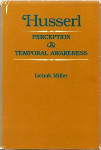 Izchak Miller
Izchak Miller
Husserl, Perception, and Temporal Awareness
(MIT 1984)
This book clarifies Husserl’s notion of perceptual experience as “immediate” or “direct” with respect to its purported object, and outlines his theory of evidence. In particular, it focuses on Husserl’s account of our perceptual experience of time, an aspect of perception rarely noted in recent philosophical literature, yet which must be taken into consideration if an adequate account of perception is to be provided. See Amazon
 Ruth Garrett Millikan
Ruth Garrett Millikan
Language, Thought, and Other Biological Categories
(MIT 1984)
Beginning with a general theory of function applied to body organs, behaviors, customs, and both inner and outer representations, Millikan argues that the intentionality of language can be described without reference to speaker intentions and that an understanding of the intentionality of thought can and should be divorced from the problem of understanding consciousness. The results support a realist theory of truth and of universals, and open the way fora nonfoundationalist and nonholistic approach to epistemology. See MIT | Amazon | Google
 Derek Parfit
Derek Parfit
Reasons and Persons
(Oxford 1984)
This book challenges, with several powerful arguments, some of our deepest beliefs about rationality, morality, and personal identity. Parfit claims that we have a false view of our own nature, that it is often rational to act against our own best interests, that most of us have moral views that are directly self-defeating, and that, when we consider future generations, the conclusions will often be disturbing. He concludes that moral non-religious moral philosophy is a young subject, with a promising but unpredictable future. See Oxford | Amazon | Google
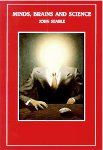 John Searle
John Searle
Minds, Brains and Science
(Harvard 1984)
Searle explains how we can reconcile an intuitive view of ourselves as conscious, free, rational agents with a universe that science tells us consists of mindless physical particles. He sets out his arguments against the familiar positions in the philosophy of mind, and details the consequences of his ideas for the mind-body problem, artificial intelligence, cognitive science, questions of action and free will, and the social sciences. See Harvard | Google
 Sydney Shoemaker & Richard Swinburne
Sydney Shoemaker & Richard Swinburne
Personal Identity
(Basil Blackwell 1984)
A debate between prominent philosophers with competing points of view. Richard Swinburne presents personal identity in the context of dualism while Sydney Shoemaker argues a materialist’s perspective in contrast. The second part of the book is devoted to each author’s reply and rebuttal to his opponent’s ideas. See Amazon
 D. M. Armstrong & Norman Malcolm
D. M. Armstrong & Norman Malcolm
Consciousness & Causality: A Debate on the Nature of Mind
(Basil Blackwell 1984)
Two distinguished philosophers present opposing views on various questions in the philosophy of mind. Among them are: What is consciousness? Can states of consciousness be identified with brain states? Are there subjective qualities of experience? If so, can they be accommodated within a functionalist theory of mind? Can mental phenomena be defined in terms of their causes and effects? See Google
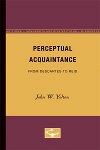 John W. Yolton
John W. Yolton
Perceptual Acquaintance: From Descartes to Reid
(U Minnesota Press 1984)
Yolton returns to a wide range of original texts – to Descartes’ scholastic precursors, to obscure pamphleteers, and to writers on religion, natural philosophy, medicine, and optics – in an effort to help us understand the issues without the interference of modern labels and categories. Includes a full account of the role of Berkeley and Hume in the study of perceptual acquaintance, and of the connection between their work. See U Minnesota Press | Google
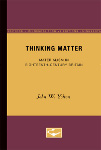 John W. Yolton
John W. Yolton
Thinking Matter: Materialism in Eighteenth-Century Britain
(U Minnesota Press 1983)
Yolton explores the controversy that grew out of John Locke’s suggestion that God could give to matter the power of thought. “Thinking matter,” as it came to be described, offered a threat to those who held orthodox beliefs on the nature and immortality of the soul. Yolton traces this controversy from a 1678 manifesto of Ralph Cudworth’s down to the philosophical and scientific studies of Joseph Priestley in the late eighteenth century. See U Minnesota Press | Google
 Rebecca Goldstein
Rebecca Goldstein
The Mind-Body Problem
(Random House 1983)
“I’m often asked what it’s like to be married to a genius.” So begins The Mind-Body Problem, a trenchant, funny, very wise novel about life and love in academia—and the conflicting demands of sensuality and spirit—that adds up to one of the most delicious and thought-provoking reading experiences in a long time. See Amazon | rebeccagoldstein.com | New York Times review
 Richard Sorabji
Richard Sorabji
Time Creation and the Continuum: Theories in Antiquity and the Early Middle Ages
(Cornell University Press 1983)
Taking time as his central theme, Sorabji explores fundamental questions about its nature: Is it real or an aspect of consciousness? Did it begin with the universe? Can anything escape it? Does it come in atomic chunks? In an illuminating discussion ranging from Plato and Aristotle to Islamic, Christian, and Jewish medieval thinkers, he argues that the thought of these often neglected philosophers is, in many cases, more complete than that of their more recent counterparts. See Amazon
 Colin McGinn
Colin McGinn
The Subjective View: Secondary Qualities and Indexical Thoughts
(Oxford 1983)
This book investigates the subjective and objective representations of the world, developing analogies between secondary qualities and indexical thoughts and arguing that subjective representations are ineliminable. Throughout, McGinn brings together historical and contemporary discussions to illuminate old problems in a novel way. See Oxford | Google | Amazon
 Guttorm Fløistad (ed.)
Guttorm Fløistad (ed.)
Contemporary Philosophy: A New Survey, Vol. 4. Philosophy of Mind
(Martinus Nijhoff 1983)
This publication is a continuation of two earlier series of chronicles, Philosophy in the Mid-Century (Firenze 1958/59) and Contemporary Philosophy (Firenze 1968), edited by Raymond Klibansky. Like the other series, these chronicles provide a survey of important trends in contemporary philosophical discussion from 1966 to 1980. See Springer | Amazon
 Ronald Melzack & Patrick D. Wall
Ronald Melzack & Patrick D. Wall
The Challenge of Pain
(Penguin 1982)
Over the years a scientific revolution has taken place in the field of brain research and therapy. A major catalyst for this change was the introduction in 1965 by Melzack and Wall of the “gate control” theory of pain, which led to an explosion of research studies and new therapeutic approaches. In this informative and important study, they explore the current status of pain research and treatment. See Google | Amazon
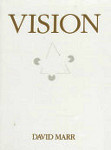 David Marr
David Marr
Vision
(W. H. Freeman 1982)
Posthumously published, this book influenced a generation of brain and cognitive scientists, inspiring many to enter the field. Marr describes a general framework for understanding visual perception and touches on broader questions about how the brain and its functions can be studied and understood. See Google | MIT Press 2010 reprint
 John Foster
John Foster
The Case for Idealism
(Routledge & Kegan Paul 1982)
Attempts to revive phenomenalism by taking a leaf from current versions of nonreductive materialism. Like materalists who deny that reduction in ontology implies reduction of language, Foster proposes an ontological phenomenalism that does not claim to establish an equivalence between physical and phenomenalist talk. He argues not only that such a picture is coherent but also that physical realism is untenable and that phenomenalism is the most plausible of the idealist alternatives. See Google
 Howard Robinson
Howard Robinson
Matter and Sense: A Critique of Contemporary Materialism
(Cambridge 1982)
The assumption of materialism (in its many forms) Howard Robinson believes is false. In telling discussions of the theory of supervenience put forward by Davidson and Peacocke, the central state materialism attributable to Smart, Armstrong and others, Putnam’s functionalism, and Rorty’s disappearance theory, he shows that, whatever their local inconsistencies, these forms of materialism all overlook or quite inadequately explain elementary and unimpeachable intuitions about our own mental experiences. See Cambridge | Amazon | Google
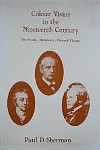 Paul D. Sherman
Paul D. Sherman
Colour Vision in the Nineteenth Century: The Young-Helmholtz-Maxwell Theory
(Adam Hilger 1981)
The story of three men in the 19th century—Thomas Young, Hermann von Helmholtz and James Clerk Maxwell—who, following Isaac Newton’s lead, helped establish that the trichomacy of colour vision is inherent not in the physics of light but in the physiology of man. See Google | New Scientist review
 John Eccles
John Eccles
The Human Psyche: The GIFFORD Lectures University of Edinburgh 1978–1979
(Springer 1980)
This is not a definitive text in neuroscience, psychology and philosophy, but rather a series of ‘adventures of ideas,’ to revive a Whiteheadean title. The aim has been to demonstrate the great explanatory power of dualist interactionism in contrast to the poverty and inadequacy of all varieties of the materialist theories of the mind. See Springer | Amazon | Google

Personal Identity
(Routledge 1989)
In this useful and welcome study, Harold Noonan locates the problem of personal identity in the context of more general puzzles about identity and discusses the major historical theories and more recent debates. A comprehensive introduction to the nature of the self and its relation to the body. See Google (2nd edition 2003) | Google (3rd edition 2019)

Bertrand Russell’s Neutral Monism
(Mittal 1989)
A study of Russell’s theory of neutral monism with special reference to logico-epistemological issues and his logical atomism. Two distinct phases are recognized: partial neutralism and complete neutral monism. The mind-body identity theory also arguably originates with Russell – its neutral monistic form is more plausible than its present-day physicalist form. See Mittal | Amazon | Google

The Case for Dualism
(Univ. Virginia Press 1989)
An anthology of nine articles by philosophers and psychologists, one neuroscientist and one computer specialist. The editors make no claim of a concerted defence of dualism in this volume but the articles are intended to vindicate dualism from a variety of perspectives. Many old arguments are rephrased and a few new ones added. See Amazon | Google

The Remembered Present: A Biological Theory of Consciousness
(Basic Books 1989)
Having laid the groundwork in his critically acclaimed books Neural Darwinism (1987) and Topobiology (1988), Edelman now proposes a comprehensive theory of consciousness. Integrating recent findings from the neurosciences with current knowledge of anatomy, cell biology, and psychology, Edelman constructs a detailed model of how we become aware of our own existence. See Amazon | Google Books

The Emperor’s New Mind
(Oxford 1989)
For decades, proponents of artificial intelligence have argued that computers will soon be doing everything that a human mind can do. Admittedly, computers now play chess at the grandmaster level, but can a computer eventually do everything a human mind can do? In this absorbing and contentious book, Penrose argues that there are some facets of human thinking that can never be emulated by a machine. See Oxford | Google

Color and Consciousness
(Temple U Press 1989)
Philosophers have debated whether colors are real qualities of bodies, dispositional properties, or mental entities caused by the impact of light upon the visual system. The author argues that none of these alternatives can be adequately defended and that they all assume that a correct theory of color must preserve, to some extent, our commonsense beliefs. Instead, Landesman defends a view called color skepticism, that nothing has any color, neither bodies nor appearances. See Temple | Google | Amazon

The Engines of the Soul
(Cambridge 1988)
Argues for dualism, the view that mind and matter are distinct entities. Hart’s point of departure is the imaginative hypothesis of disembodiment, which establishes the possibility of the mind’s being a non-material thing. As for mind-body interaction, Hart contends that the issue is as much about the nature of causation as it is about the natures of mind and matter. See Cambridge | Google

Guyau and the Idea of Time
(North Holland 1988)
This volume revives a most remarkable essay by the French philosopher Jean-Marie Guyau (1854-1888) on the genesis of our idea of time. The original text, written in Guyau’s widely acclaimed style, is accompanied here by its first translation into English, and by several chapters highlighting Guyau’s thought and contemporary significance. Central to his argument is his thesis that time is an acquired organisation of representations enabling humans to store and remember past events, a position remarkably consistent with modern cognitive views about knowledge representation and memory. See Amazon

Time in History: Views of Time from Prehistory to the Present Day
(Oxford 1988)
A compelling, groundbreaking volume that traces the evolution of our awareness of time from the dawn of history to the present day. Whitrow examines not only the development of our methods of measuring time, but also how changing concepts of time have influenced history itself. Ranging from Ancient Egypt, Greece, Israel, the Islamic World, India, and China, to Europe and America, he presents an absorbing account of the different ways that various civilizations throughout history have perceived time. See Amazon | Google

Plotinus on Sense-Perception
(Cambridge 1988)
A philosophical analysis of Plotinus’ views on sense-perception that aims to show how his thoughts were both original and a development of the ideas of his predecessors, in particular those of Plato, Aristotle and the Peripatetics. Special attention is paid to Plotinus’ dualism with respect to soul and body and its implications for his views on the senses. See Cambridge | Amazon | Google

Color for Philosophers: Unweaving the Rainbow
(Hackett 1988)

Winner of the 1986 Johnsonian Prize in Philosophy, this expanded edition of C. L. Hardin’s ground-breaking work on color features a new chapter, “Further Thoughts: 1993,” in which the author revisits the dispute between color objectivists and subjectivists from the perspective of the ecology, genetics, and evolution of color vision, and brings to bear new data on individual variability in color perception. See Hackett | Google | Amazon

A Cognitive Theory of Consciousness
(Cambridge 1988)
Baars suggests a way to specify empirical constraints on a theory of consciousness by contrasting well-established conscious phenomena (such as stimulus representations known to be attended, perceptual, and informative) with closely comparable unconscious ones (such as stimulus representations known to be preperceptual, unattended, or habituated). Adducing data to show that consciousness is associated with a kind of global workplace in the nervous system, Baars helps to clarify many difficult problems. See Google | Bruce Bridgeman review

The Body: Toward an Eastern Mind-Body Theory
(SUNY 1987)
Yuasa suggests a reorientation in our conception of the body. Asian traditions, he reveals, do not sharply separate mind from body: while conceptually distinct from some perspectives, they are not meant to be ontologically distinct. Mind-body unity is also generally treated as an achievement rather than an essential relation. The book clears the ground for a provocative meeting between East and West. See SUNY | Amazon | Google

Mindwaves: Thoughts on Intelligence, Identity and Consciousness
(Basil Blackwell 1987)
Are mindwaves just brainwaves or is there a ghost in the machine after all? The mind exerts a special fascination in our inquisitive and scientific age. Does it exist apart from the brain or is it just another way of talking about the actions of the brain itself? An important area of modern enquiry is opened up in this volume to reveal its cornerstones, controversies, and further directions. See Amazon

Time: A Philosophical Treatment
(Croom Helm 1987)

“My objection throughout this discussion will be to object to thinking about time dynamically, and to show that the static view can withstand the objections from the transient and tensed theorists, and constitutes an adequate theory of time.” See Google

Psychosemantics: The Problem of Meaning in the Philosophy of Mind
(MIT 1987)

This book explores the relation between commonsense psychological theories and problems that are central to semantics and the philosophy of language. Building on and extending Fodor's earlier work, it puts folk psychology on firm theoretical ground and rebuts externalist, holist, and naturalist threats to its position. See MIT | Amazon | Google

Consciousness
(MIT 1987)

Lycan defends an original theory of mind that he calls "homuncular functionalism." He argues that human beings are "functionally organized information-processing systems" who have no non-physical parts or properties, while recognizing the subjective phenomenal qualities of mental states and events, and an important sense in which mind is "over and above" mere chemical matter. See M.I.T. Press | Google | Amazon

Appearance and Reality: A Philosophical Investigation Into Perception and Perceptual Qualities
(Blackwell 1987)
Hacker investigates the venerable claim that colours, tastes and sounds are mind-dependent or relative rather than objective characteristics of the world. The origins and development of this conception of appearance and reality are sketched. An analysis of sensation and perception follows, and the book concludes with an analytical account of the notions of the apparent and the real, and of the distinctions between appearances and perceptual experiences. See Amazon | Google

Color and Color Perception: A Study in Anthropocentric Realism
(CSLI 1987)
Color has often been supposed to be a subjective property, to be analyzed in terms of the phenomenological aspects of human experience. In contrast, an objectivist analysis of color takes color to be a property objects possess in themselves, independently of the character of human perceptual experience. David Hilbert defends a form of objectivism that identifies color with a physical property of surfaces – their spectral reflectance. See CSLI | Google | Amazon

Perception: An Essay on Classical Indian Theories of Knowledge
(Oxford 1986)

A defence of a form of realism which stands closest to that upheld by the Nyāya school in classical India. Matilal presents the Nyāya view and critically examines it against that of its traditional opponent, the Buddhist version of phenomenalism and idealism. His reconstruction of Nyāya arguments meets not only traditional Buddhist objections but also those of modern sense-data representationalists. See Oxford | Amazon

Blindsight: A Case Study and Implications
(Oxford 1986)
Damage to the neocortex is generally understood to result in blindness, but some patients with this form of blindness can nevertheless discriminate certain types of visual events within their “blind” field, though without being aware of this ability: they think they are only “guessing.” Weiskrantz gives an account of research over a number of years into a particular case of such “blindsight,” along with a discussion of the historical and neurological background. Note – there is an updated 2009 edition. See Amazon | Google

The View from Nowhere
(Oxford 1986)

Humans have the unique ability to view the world in a detached way: we can think about it in terms that transcend our own experience or interest and consider it from a vantage point that is “nowhere in particular.” At the same time, each of us is a particular person in a particular place, each with his own “personal” view of the world, a view that we can recognize as just one aspect of the whole. How do we reconcile these two standpoints? Nagel’s ambitious and lively book tackles this fundamental issue, arguing that our divided nature is the root of a whole range of philosophical problems. See Oxford | Google | Amazon

An Introduction to the Philosophy of Time and Space
(Columbia U Press 1985, 2nd edition)

This book is based primarily on an undergraduate philosophy course on time and space at Yale University from 1966 to 1968. Originally published in 1970. See Amazon | Free download of 2015 electronic edition

Death and Consciousness
(McFarland 1985)
Does bodily death mean the complete destruction of a person? The first part of this book defends the view that the nature of man and the world he encounters implies survival of death as a conceptual possibility. The second part considers the empirical evidence for concluding that at least some persons have survived death. See McFarland (2012 edition) | Google (2012 edition)

Colour: Why the World isn’t Grey
(Princeton 1985)
Color, or the lack of it in the air, water, earth, fire, foods, animals and humans is discussed in this book. The author answers such puzzling questions as: Why do pebbles look brighter when wet? What are the colors you see when you press your eyelids against your eyes? One reviewer commented that Rossotti shows an “encyclopedic knowledge of the subject.” See Princeton | Google | Amazon

Husserl, Perception, and Temporal Awareness
(MIT 1984)
This book clarifies Husserl’s notion of perceptual experience as “immediate” or “direct” with respect to its purported object, and outlines his theory of evidence. In particular, it focuses on Husserl’s account of our perceptual experience of time, an aspect of perception rarely noted in recent philosophical literature, yet which must be taken into consideration if an adequate account of perception is to be provided. See Amazon

Language, Thought, and Other Biological Categories
(MIT 1984)

Beginning with a general theory of function applied to body organs, behaviors, customs, and both inner and outer representations, Millikan argues that the intentionality of language can be described without reference to speaker intentions and that an understanding of the intentionality of thought can and should be divorced from the problem of understanding consciousness. The results support a realist theory of truth and of universals, and open the way fora nonfoundationalist and nonholistic approach to epistemology. See MIT | Amazon | Google

Reasons and Persons
(Oxford 1984)
This book challenges, with several powerful arguments, some of our deepest beliefs about rationality, morality, and personal identity. Parfit claims that we have a false view of our own nature, that it is often rational to act against our own best interests, that most of us have moral views that are directly self-defeating, and that, when we consider future generations, the conclusions will often be disturbing. He concludes that moral non-religious moral philosophy is a young subject, with a promising but unpredictable future. See Oxford | Amazon | Google

Minds, Brains and Science
(Harvard 1984)
Searle explains how we can reconcile an intuitive view of ourselves as conscious, free, rational agents with a universe that science tells us consists of mindless physical particles. He sets out his arguments against the familiar positions in the philosophy of mind, and details the consequences of his ideas for the mind-body problem, artificial intelligence, cognitive science, questions of action and free will, and the social sciences. See Harvard | Google

Personal Identity
(Basil Blackwell 1984)
A debate between prominent philosophers with competing points of view. Richard Swinburne presents personal identity in the context of dualism while Sydney Shoemaker argues a materialist’s perspective in contrast. The second part of the book is devoted to each author’s reply and rebuttal to his opponent’s ideas. See Amazon

Consciousness & Causality: A Debate on the Nature of Mind
(Basil Blackwell 1984)
Two distinguished philosophers present opposing views on various questions in the philosophy of mind. Among them are: What is consciousness? Can states of consciousness be identified with brain states? Are there subjective qualities of experience? If so, can they be accommodated within a functionalist theory of mind? Can mental phenomena be defined in terms of their causes and effects? See Google

Perceptual Acquaintance: From Descartes to Reid
(U Minnesota Press 1984)
Yolton returns to a wide range of original texts – to Descartes’ scholastic precursors, to obscure pamphleteers, and to writers on religion, natural philosophy, medicine, and optics – in an effort to help us understand the issues without the interference of modern labels and categories. Includes a full account of the role of Berkeley and Hume in the study of perceptual acquaintance, and of the connection between their work. See U Minnesota Press | Google

Thinking Matter: Materialism in Eighteenth-Century Britain
(U Minnesota Press 1983)
Yolton explores the controversy that grew out of John Locke’s suggestion that God could give to matter the power of thought. “Thinking matter,” as it came to be described, offered a threat to those who held orthodox beliefs on the nature and immortality of the soul. Yolton traces this controversy from a 1678 manifesto of Ralph Cudworth’s down to the philosophical and scientific studies of Joseph Priestley in the late eighteenth century. See U Minnesota Press | Google

The Mind-Body Problem
(Random House 1983)
“I’m often asked what it’s like to be married to a genius.” So begins The Mind-Body Problem, a trenchant, funny, very wise novel about life and love in academia—and the conflicting demands of sensuality and spirit—that adds up to one of the most delicious and thought-provoking reading experiences in a long time. See Amazon | rebeccagoldstein.com | New York Times review

Time Creation and the Continuum: Theories in Antiquity and the Early Middle Ages
(Cornell University Press 1983)
Taking time as his central theme, Sorabji explores fundamental questions about its nature: Is it real or an aspect of consciousness? Did it begin with the universe? Can anything escape it? Does it come in atomic chunks? In an illuminating discussion ranging from Plato and Aristotle to Islamic, Christian, and Jewish medieval thinkers, he argues that the thought of these often neglected philosophers is, in many cases, more complete than that of their more recent counterparts. See Amazon

The Subjective View: Secondary Qualities and Indexical Thoughts
(Oxford 1983)
This book investigates the subjective and objective representations of the world, developing analogies between secondary qualities and indexical thoughts and arguing that subjective representations are ineliminable. Throughout, McGinn brings together historical and contemporary discussions to illuminate old problems in a novel way. See Oxford | Google | Amazon

Contemporary Philosophy: A New Survey, Vol. 4. Philosophy of Mind
(Martinus Nijhoff 1983)

This publication is a continuation of two earlier series of chronicles, Philosophy in the Mid-Century (Firenze 1958/59) and Contemporary Philosophy (Firenze 1968), edited by Raymond Klibansky. Like the other series, these chronicles provide a survey of important trends in contemporary philosophical discussion from 1966 to 1980. See Springer | Amazon

The Challenge of Pain
(Penguin 1982)
Over the years a scientific revolution has taken place in the field of brain research and therapy. A major catalyst for this change was the introduction in 1965 by Melzack and Wall of the “gate control” theory of pain, which led to an explosion of research studies and new therapeutic approaches. In this informative and important study, they explore the current status of pain research and treatment. See Google | Amazon

Vision
(W. H. Freeman 1982)
Posthumously published, this book influenced a generation of brain and cognitive scientists, inspiring many to enter the field. Marr describes a general framework for understanding visual perception and touches on broader questions about how the brain and its functions can be studied and understood. See Google | MIT Press 2010 reprint

The Case for Idealism
(Routledge & Kegan Paul 1982)
Attempts to revive phenomenalism by taking a leaf from current versions of nonreductive materialism. Like materalists who deny that reduction in ontology implies reduction of language, Foster proposes an ontological phenomenalism that does not claim to establish an equivalence between physical and phenomenalist talk. He argues not only that such a picture is coherent but also that physical realism is untenable and that phenomenalism is the most plausible of the idealist alternatives. See Google

Matter and Sense: A Critique of Contemporary Materialism
(Cambridge 1982)
The assumption of materialism (in its many forms) Howard Robinson believes is false. In telling discussions of the theory of supervenience put forward by Davidson and Peacocke, the central state materialism attributable to Smart, Armstrong and others, Putnam’s functionalism, and Rorty’s disappearance theory, he shows that, whatever their local inconsistencies, these forms of materialism all overlook or quite inadequately explain elementary and unimpeachable intuitions about our own mental experiences. See Cambridge | Amazon | Google

Colour Vision in the Nineteenth Century: The Young-Helmholtz-Maxwell Theory
(Adam Hilger 1981)
The story of three men in the 19th century—Thomas Young, Hermann von Helmholtz and James Clerk Maxwell—who, following Isaac Newton’s lead, helped establish that the trichomacy of colour vision is inherent not in the physics of light but in the physiology of man. See Google | New Scientist review

The Human Psyche: The GIFFORD Lectures University of Edinburgh 1978–1979
(Springer 1980)
This is not a definitive text in neuroscience, psychology and philosophy, but rather a series of ‘adventures of ideas,’ to revive a Whiteheadean title. The aim has been to demonstrate the great explanatory power of dualist interactionism in contrast to the poverty and inadequacy of all varieties of the materialist theories of the mind. See Springer | Amazon | Google
Menu
 What’s a logical paradox?
What’s a logical paradox? Achilles & the tortoise
Achilles & the tortoise The surprise exam
The surprise exam Newcomb’s problem
Newcomb’s problem Newcomb’s problem (sassy version)
Newcomb’s problem (sassy version) Seeing and being
Seeing and being Logic test!
Logic test! Philosophers say the strangest things
Philosophers say the strangest things Favourite puzzles
Favourite puzzles Books on consciousness
Books on consciousness Philosophy videos
Philosophy videos Phinteresting
Phinteresting Philosopher biographies
Philosopher biographies Philosopher birthdays
Philosopher birthdays Draft
Draftbarang 2009-2024  wayback machine
wayback machine
 wayback machine
wayback machine